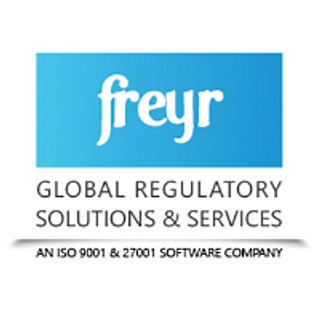FDA’s New Healthy Claims: Labeling Rules & Compliance Guide
- Freyr Global Regulatory Solutions
- Jul 11
- 3 min read
The U.S. Food and Drug Administration (FDA) has announced a significant update to the “healthy” claim definition for food labeling, which will take effect on April 28, 2025. This new regulation alters how the term can be applied on packaging, making it more aligned with current nutrition science and federal dietary recommendations. For food manufacturers, regulatory experts, and health-minded consumers, this revision presents both challenges and opportunities. Why Did the FDA Change the Definition of “Healthy”? For many years, the “healthy” label on food products was determined by outdated guidelines. Many nutrient-rich foods—such as avocados, nuts, and fish—were excluded, while some processed foods with minimal nutritional content qualified. The revised definition seeks to rectify this by aligning “healthy” claims with the existing Dietary Guidelines for Americans, enabling consumers to make better-informed choices. Updates to FDA Food Labeling Regulations 2025 Certain previously excluded items are now permitted: nuts, seeds, fatty fish, avocados, select oils, plain coffee, and tea are now included under the new criteria. Some products are no longer eligible: items like sugary cereals, sweetened yogurts, and fortified white bread will no longer be allowed to carry the “healthy” label. Clarification: Criteria Differ by Product Category The FDA has outlined that the “healthy” claim will vary by food category—differentiating between single foods, mixed products, and meals/main dishes explicitly. Requirements for Using the FDA “Healthy” Claim: A minimum amount of one or more food-group equivalents (fruits, vegetables, whole grains, low-fat dairy, lean proteins, or certain oils) is needed. Products must adhere to established limits for saturated fat, sodium, and added sugars. Category-Specific Standards: Product Type Food Group Requirement Nutrient Limits Individual Food ≥ 1 food-group equivalent (e.g., 2/3 cup of yogurt) ≤ 2 g saturated fat, ≤ 230 mg sodium, ≤ 2.5 g added sugar Mixed Product ≥ 1 equivalent, with ≥¼ from 2+ groups (e.g., trail mix) ≤ 2 g saturated fat, ≤ 345 mg sodium, ≤ 5 g added sugar Meal/Main Dish ≥ 3 equivalents, ≥½ of the total from 3+ groups (e.g., salmon + rice + beans) ≤ 4 g saturated fat, ≤ 690 mg sodium, ≤ 10 g added sugar **The above figures reflect FDA guidance on serving sizes and daily values. Real-World Example For instance, a bar labeled “healthy” is required to include at least ¾ ounce of whole grains and a maximum of 5 grams of added sugar per serving. What This Implies for Food Manufacturers? Voluntary Participation Using the “healthy” claim is still voluntary. However, businesses choosing to use it must meet the new standards. Adjustment Period Manufacturers have until February 28, 2028, to ensure that their products and labeling comply. Reformulation Needs Items high in sodium, added sugars, or saturated fats may require reformulation, which could necessitate changes in ingredients or processes. Labeling Changes Packages will need to be updated to conform to the new standards, affecting design, layout, and marketing messages. Benefits for Consumers Enhanced Clarity: The “healthy” label will more accurately represent nutritious, balanced choices. Improved Options: Look for an increase in products made from whole grains, fruits, and vegetables, with less added sugars or sodium. How Freyr Solutions Can Assist Adapting to the FDA’s revised rule can be intricate. From reformulating recipes to revamping packaging, achieving compliance demands careful planning and regulatory knowledge. Regulatory Gap Assessments Product evaluations to determine adherence to the new “healthy” criteria Market-specific regulatory alignment for international brands Labeling & Artwork Management Creation of FDA-compliant SPL formats for nutrition facts Support for multilingual labeling, allergen disclosures, and digital graphic lifecycle management Reformulation Guidance Strategies for ingredient substitution Assistance with optimizing taste, texture, and nutritional value Recordkeeping & Documentation Automated tracking systems for nutrient details Audit-ready documentation and validation of compliance Final Thoughts The redefinition of “healthy” marks a significant change in FDA Nutrition labeling rules. Manufacturers are urged to adapt promptly to remain competitive. Reformulate, relabel, and reposition your offerings to meet shifting consumer preferences and regulatory demands. Freyr Solutions is prepared to support you at every point in the transition process. From gap analyses to compliant label launches, we help ensure your brand remains competitive, compliant, and consumer-friendly. Get Started |







Comments